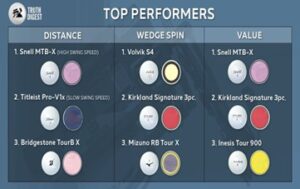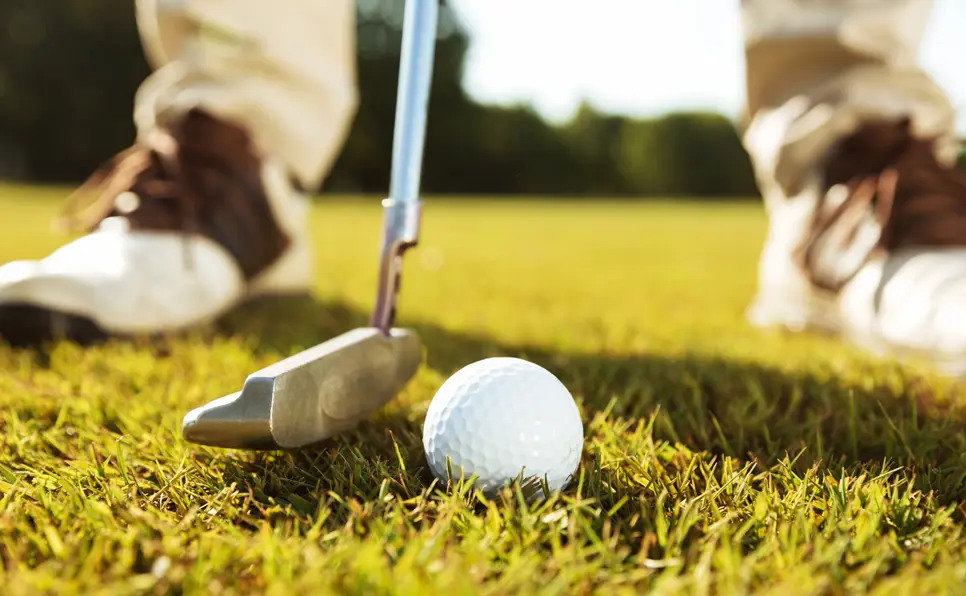Golf Ball Types
Does knowing Golf Ball Types improve your game? Short answer, No. Why? Because if you are a beginner, you must know many other things about Golf to swing those clubs. But if you are a pro (low handicap and scratch golfers), knowing different ball types and features like high compression core, multi-layer construction, hardness, required driver spin, or amount of wedge spin you need to add will add much more to your game. If you are competing at the world championship level, where the difference between the players is next to nothing, knowing the Golf Ball Types can be the differential to winning a triple crown or even career grand slams.
Experts and veterans who have spent years studying and playing this sport prioritize Golf Ball types to enhance their performances. While advanced players can get more distance out of any golf ball and control their shots better, intermediate players need to know about golf ball types to make that leap.
Details like dimple patterns on the ball, cover, and core of the golf ball all become relevant once you understand the basics. While some golf ball types favor professionals, some are custom-made for beginners.
So, how do you find the difference, find the right one for you, and make a difference in your style of play! Read this blog to find out.
Types of Golf Balls:
Broadly speaking, golf balls are widely categorized into four types:
- Tour Performance:Tour performance types of golf balls are the most expensive and are ideal for low handicap and scratch golfers who have a faster swing speed. Tour performance of golf balls is optimal for long distances and spin. They are made of 3-5 layers.
- Tour Value: These types of golf balls are almost similar to Tour Performance Golf Balls, but Tour Value Golf Balls have a low compression rating, less spin, and are reasonable. They are made of 3 layers.
- Straight Distance: These golf balls are built with a large core thin outer layer and do not perform an excellent short game with wedge spin. They are made of 2-3 layers. These are designed for long distances, fly straighter, and are cheaper than Tour Value golf balls.
- Soft Distance: Made of 2-3 layers, they are designed for golfers with slower swing speeds. These are specially designed for amateur golfers who will get more distance with less side-to-side spin with these balls.

Factors making critical differences to the types of Golf Balls:
Here are the factors you should be paying attention to while deciding on the kind of golf ball for practicing:
-
Dimples:
A low-handicap would opt for 500 dimples, whereas a newbie would prefer 300. And trust me, this has got nothing to do with the design. The dimples serve a particular and vital purpose: providing spin and distance. Someone who doesn’t know how to spin or control the spin would opt for fewer dimples. Whereas the professionals would opt for the highest amount of dimples.
-
Cover:
Typically, golf balls are made of either of two materials: Urethane & Surlyn. Urethane delivers the highest spin on wedge shots. Hence, it is used in tours. Surlyn covers are more rigid and more durable compared to Urethane. The rugged exterior allows the Surlyn to travel the distance. Still, Urethane, because of its soft surface, gives more control to the shot and is prone to easier marking.
-
Compression:
Compression is a crucial factor for golf ball types. Compression is the ability of the golf ball to handle the high-speed impact. It also determines flexibility, allowing the ball to recoil without breaking apart when hit. For starters, low compression allows more distance but comprises the control. Low-handicaps prefer high-compression golf balls because they offer more control over the ball.
-
Layers:
As the sport underwent a series of upgrades over the years, so did the golf balls. From horsehide and feathers, the golf ball has come a long way. From cover to the core, golf balls incorporate several layers to keep up with technological advances. Each golf ball of various layers adds something unique to every golfer’s ability. These subtle variances help golfers get the most out of their playing style. The basic are piece golf balls perfect for beginners and for the driving range. The layers keep on increasing progressively. The 5-layered golf balls are apt for low handicaps and offer tour-level performance.
-
Hardness:
The harder the ball, the further it will travel. The softer the ball, the easier to add more spin. Although the more rigid balls offer more control in terms of hitting them straight, the softer balls are preferred by the pros.
-
Color:
While color may seem vague and doesn’t affect the game’s technicalities or style, people with vision issues are advised to choose balls that are visible over a long range.
Conclusion:
Mastering golf requires aligning many factors like picking the right club, your swing motion, understanding wind and terrain details, etc. Golf ball types are not the first thing you want to focus on while learning. As you gradually progress as a golfer, you must handle different golf ball types. Knowing golf ball types can add those finishing touches to your overall development as a golfer.




